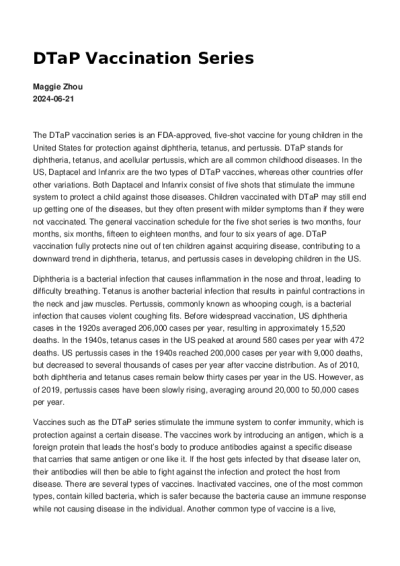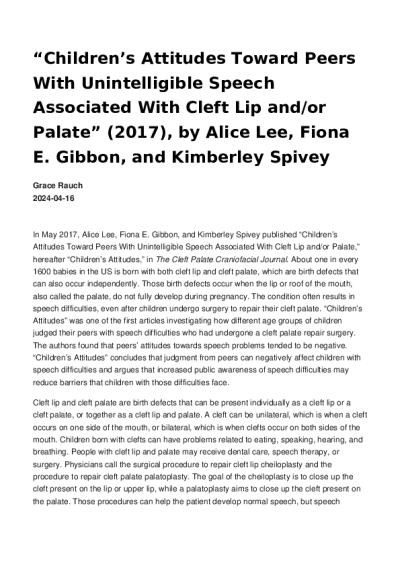
In May 2017, Alice Lee, Fiona E. Gibbon, and Kimberley Spivey published "Children's Attitudes Toward Peers With Unintelligible Speech Associated With Cleft Lip and/or Palate," hereafter "Children's Attitudes," in The Cleft Palate Craniofacial Journal. About one in every 1600 babies in the US is born with both cleft lip and cleft palate, which are birth defects that can also occur independently. Those birth defects occur when the lip or roof of the mouth, also called the palate, do not fully develop during pregnancy. The condition often results in speech difficulties, even after children undergo surgery to repair their cleft palate. "Children's Attitudes" was one of the first articles investigating how different age groups of children judged their peers with speech difficulties who had undergone a cleft palate repair surgery. The authors found that peers' attitudes towards speech problems tended to be negative. "Children's Attitudes" concludes that judgment from peers can negatively affect children with speech difficulties and argues that increased public awareness of speech difficulties may reduce barriers that children with those difficulties face.
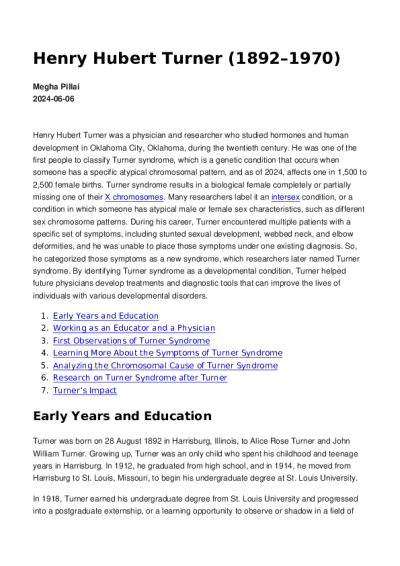
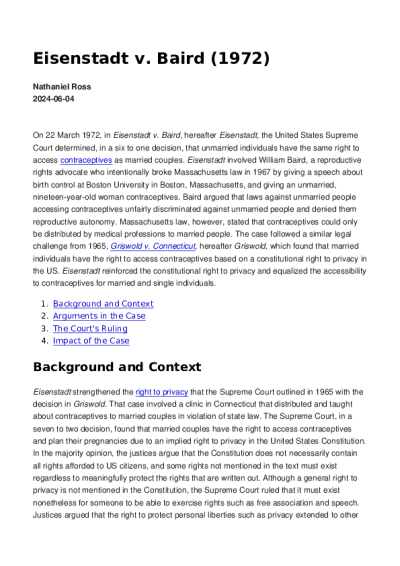
On 22 March 1972, in Eisenstadt v. Baird, hereafter Eisenstadt, the United States Supreme Court determined, in a six to one decision, that unmarried individuals have the same right to access contraceptives as married couples.Eisenstadt involved William Baird, a reproductive rights advocate who intentionally broke Massachusetts law in 1967 by giving a speech about birth control at Boston University in Boston, Massachusetts, and giving an unmarried, nineteen-year-old woman contraceptives. Baird argued that laws against unmarried people accessing contraceptives unfairly discriminated against unmarried people and denied them reproductive autonomy. Massachusetts law, however, stated that contraceptives could only be distributed by medical professions to married people. The case followed a similar legal challenge from 1965, Griswold v. Connecticut, hereafter Griswold, which found that married individuals have the right to access contraceptives based on a constitutional right to privacy in the US.Eisenstadt reinforced the constitutional right to privacy and equalized the accessibility to contraceptives for married and single individuals.
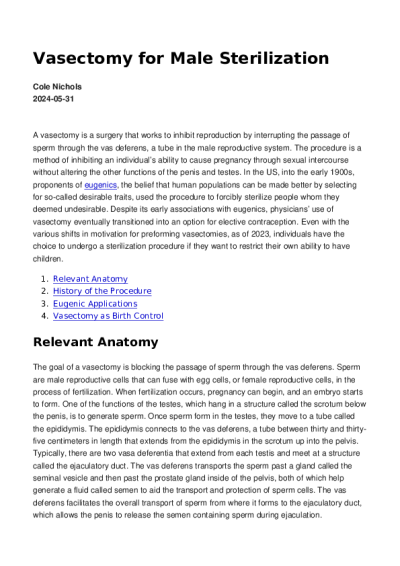
A vasectomy is a surgery that works to inhibit reproduction by interrupting the passage of sperm through the vas deferens, a tube in the male reproductive system. The procedure is a method of inhibiting an individual's ability to cause pregnancy through sexual intercourse without altering the other functions of the penis and testes. In the US, into the early 1900s, proponents of eugenics, the belief that human populations can be made better by selecting for so-called desirable traits, used the procedure to forcibly sterilize people whom they deemed undesirable. Despite its early associations with eugenics, physicians' use of vasectomy eventually transitioned into an option for elective contraception. Even with the various shifts in motivation for performing vasectomies, as of 2024, individuals have the choice to undergo a sterilization procedure if they want to restrict their own ability to have children.
